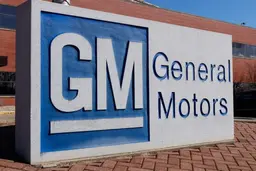
General Motors Cutting Costs with 1,000 Layoffs

On November 15, 2024, it was announced that General Motors (GM) would be letting around 1,000 of its workers go in cost-cutting efforts. This decision was necessitated by fierce competition in the automotive market, particularly in the electric vehicle (EV) sector.
General Motors Layoffs
Despite previous assurances to avoid layoffs, the giant automaker’s decision to dismiss almost a thousand of its employees, most of whom had white-collar roles, was released at the end of last week.
This will affect GM workers around the world, but mainly those based in North America (particularly at the company’s Global Technical Center in Warren, MI).
GM Reorganization
GM is aiming to reduce $2 billion in fixed costs by the end of 2024. According to CNBC, the company’s decision was also influenced by performance evaluations and structural reorganizations.
Other than GM’s need to improve operations and speed, no other details were disclosed in its statement.
Buyout Offers
This isn’t the first time GM has had to reduce costs in recent times. In April 2023, the company offered voluntary buyout packages to white-collar employees with at least five years of service, and to global executives with at least two years.
Approximately 5,000 employees accepted these offers, allowing GM to meet its cost-reduction goals at the time without resorting to further staff cuts. GM initially stated that these voluntary departures would prevent the need for further layoffs, but evolving market conditions have forced the company to reconsider.
Transitioning to EVs
As the automotive market is shifting towards electric mobility, GM has been working on the development of its EV lineup, but without giving up on its gas-powered offerings. Where it’s struggling is in balancing investments in EV production, battery assembly, and securing materials.
Although the company’s EV sales have grown, the pace is slower compared to 2023. This has prompted GM to adjust its 2024 EV production target. To meet market demands but avoid overproduction, the company has reduced this target by 50,000 units.
EV Market Struggles
The recent political changes expected with the incoming new administration have brought uncertainty to the future of the EV industry. Policy changes, including the potential elimination of the $7,500 EV tax credit, will likely put a spanner in the works of widespread EV adoption.
Tesla leads the U.S. EV market with a 48.2% share, while GM holds a distant second at 9.4%. The company has been trying to close this gap, but it seems that ever-changing market conditions and political shifts will be obstacles for GM, as well as other U.S. automakers.
Image Credit: Shutterstock/Jonathan Weiss













































.jpg)
.jpg)
.jpg)





.jpg)



.png)
.jpg)

.jpg)
_lVjBYb.jpg)

.jpg)
.jpg)



.jpg)
.jpg)







.jpg)

.jpg)
.jpg)











.jpg)




.jpg)
.jpg)
.jpg)
.jpg)
.jpg)
.jpg)

.jpg)

.jpg)
.jpg)
.jpg)






.jpg)


.jpg)






